Crockpot Applesauce (Easy, No-Sugar Recipe)
Make hands-off crockpot applesauce with just a few simple ingredients. Smooth or chunky, naturally sweet, and perfect for freezing or snacking all week.
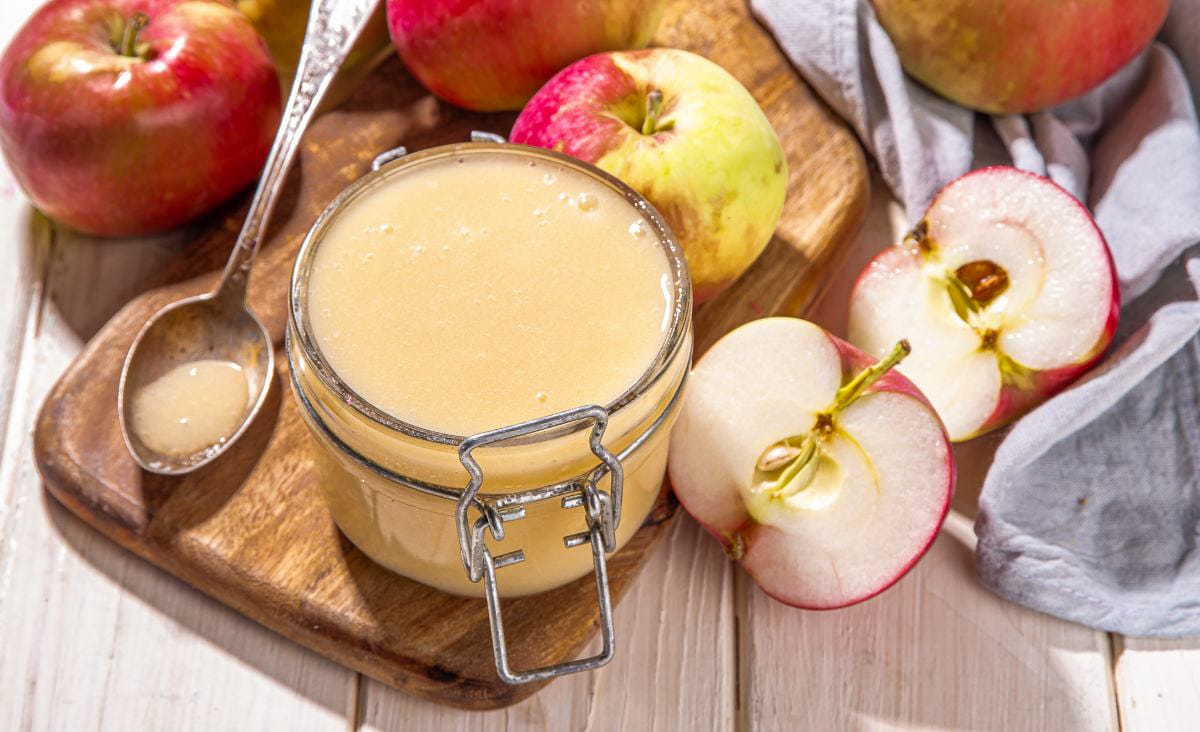
There’s a moment every fall when I look at the big bag of apples I brought home and think, “Alright… now what?” It happens whether I picked them myself or grabbed a basket from the farmers market. When I’m swimming in apples and don’t have the energy for a full canning day, crockpot applesauce is the first thing I make.
It’s hands-off, the house smells incredible, and it’s one of those simple wins that makes you feel ahead for the week. If you’ve never used your slow cooker for applesauce, you’ll see pretty quickly why I keep coming back to this method.
I’ll walk you through how I make crockpot applesauce, how to make it as smooth or chunky as you want, the best apples to use, flavor variations, and how to store or freeze your batch for later (or can it, if you’re up to it).
Why Crockpot Applesauce Works So Well
I’ve tried stovetop applesauce more times than I can count, but I’ll be honest, the slow cooker wins every single time. The slow cooker just does its thing. No babysitting. No hovering. It just turns everything soft and sweet while you get on with your day.
Another perk? You can mix and match whatever apples you’ve got. I’ve tossed in bruised apples, apples that got a little mealy in the crisper, and the stragglers from my kids’ lunch boxes. It all cooks down into a pot of soft, sweet apples.
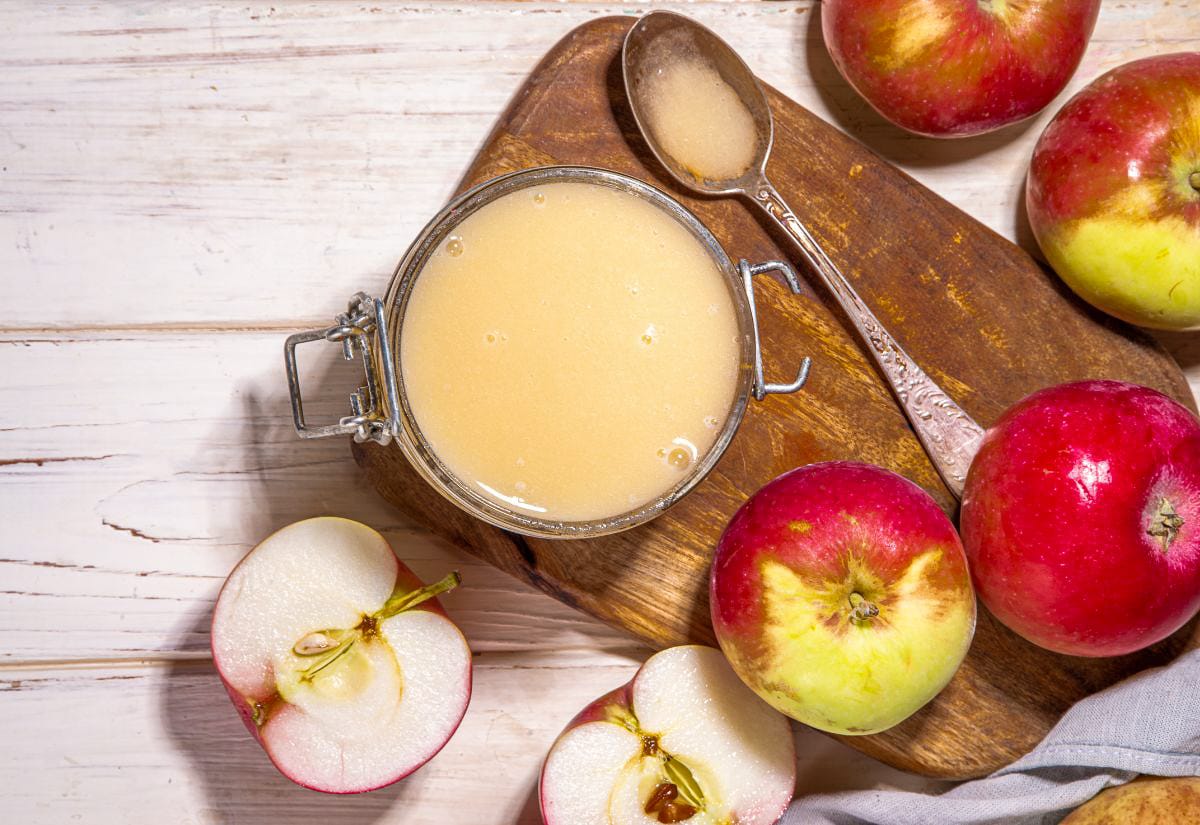
The Best Apples for Homemade Applesauce
The trick to really good applesauce is using both sweet and tart apples. The combination makes the flavor pop without needing a lot of added sugar.
A few combinations I love:
- Sweet apples: Fuji, Gala, Golden Delicious
- Tart apples: Granny Smith, Cortland, McIntosh
If I’m making a big batch, I pretty much use whatever’s on sale and toss in at least one tart variety for balance. And if you like your applesauce with a pretty blush to it, leave some peel on. It gives the sauce a little color and a bit more texture.
Ingredients for Crockpot Applesauce
Here’s everything I toss into the crockpot.
- Fresh apples, chopped (mixed varieties taste best)
- A splash of water or apple cider
- Cinnamon or warm spices (optional)
- Sweetener like sugar, honey, or maple syrup (optional)
I always start without sweetener because apples get sweeter as they cook. You can taste at the end and decide if you want to add anything.
How to Make It (Step-by-Step)
If applesauce feels like one of those projects you don’t have time for, this is the method that proves otherwise. It’s one of the dump-and-go recipes I pull out when life gets busy.
Prep the Apples
Wash them well, then peel or don’t peel. Both work. Peeling gives you a silky-smooth sauce. Leaving the peel gives you color and a rustic texture. An apple peeler/corer makes this go faster, especially if you’re cranking out a couple of batches.
Core the apples and chop them into fairly even chunks so they cook at the same rate.
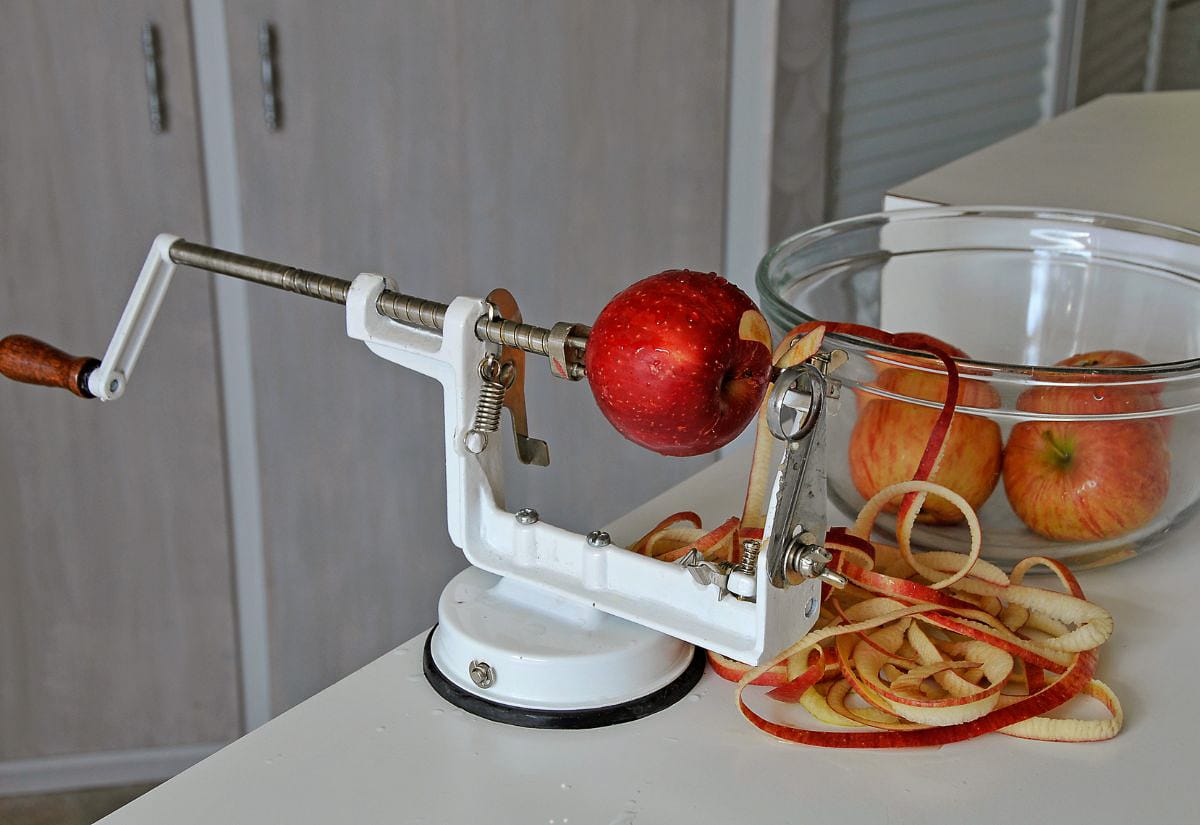
Load the Slow Cooker
Add all your chopped apples to the crockpot. They can sit a little heaped on top. Add just enough water or apple cider to lightly coat the bottom. This keeps anything from sticking before the apples release their own juice.
If you want the flavor to start developing early, sprinkle a little cinnamon on top.
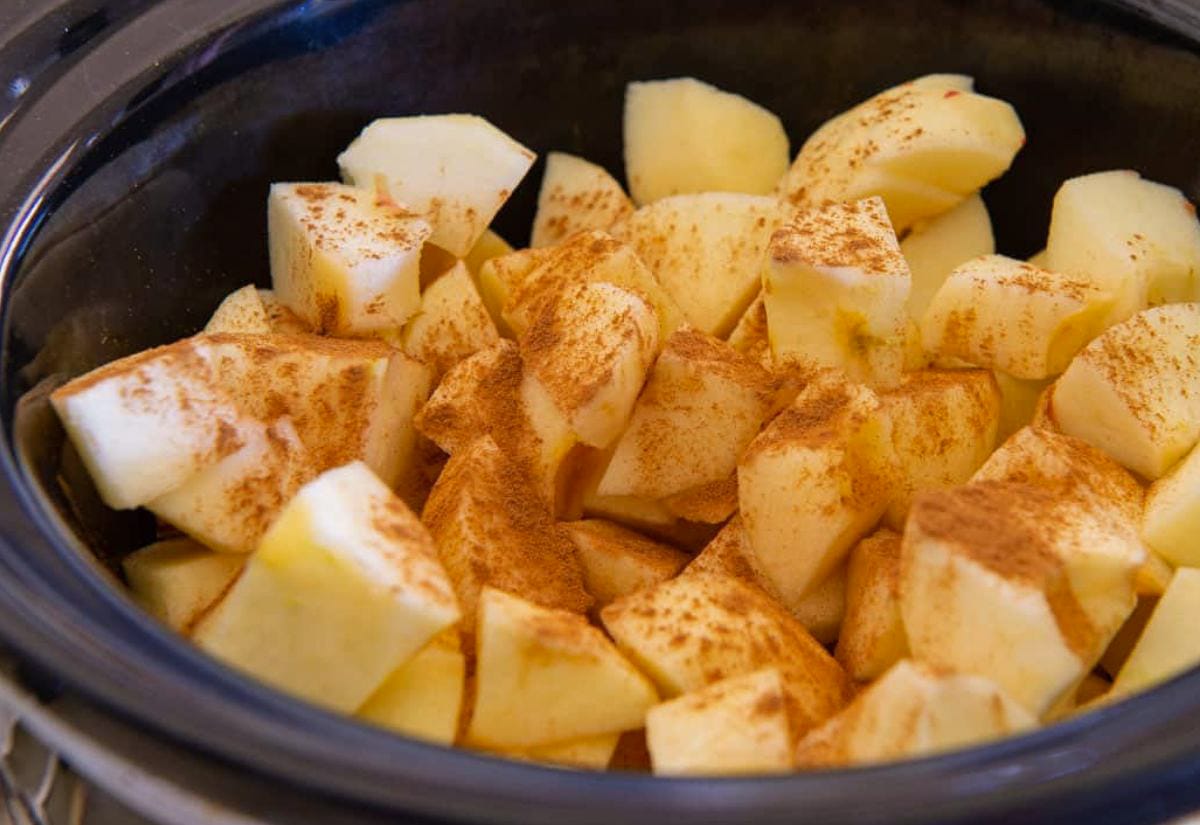
Slow Cook Until Soft
Cook on LOW for 6–8 hours or HIGH for 3–4 hours, depending on your schedule. The apples should collapse easily when pressed with a spoon.
If you notice the applesauce looks a little watery near the end, prop the lid slightly open during the last 30–45 minutes. That extra steam release thickens it right up.
Mash or Blend
Once everything is soft, it’s time to decide what kind of texture you’re in the mood for.
- Chunky: Mash with a potato masher.
- Smooth: Use an immersion blender right in the crockpot or ladle it into a regular blender in small batches.
Both versions are good, so go with whatever texture you like. This is also the moment to add sweetener, if your apples need a little boost.
Flavor Variations to Try
This recipe is forgiving, so feel free to play around with it. These are a few of my go-tos when I’m not making a classic batch:
- Classic Cinnamon: Add cinnamon and a pinch of nutmeg and cloves to the apples at the start.
- Maple Vanilla: Stir in a splash of vanilla and a drizzle of real maple syrup after blending.
- Berry Blend: Add blueberries, strawberries, or raspberries during the last hour of cooking.
- Pear Ginger: Mix in chopped ripe pears and a small pinch of ground ginger.
If you overdid it at the orchard this year, applesauce is a great way to use up odds and ends that don’t fit into crumbles, crisps, or pies.
How to Store and Reheat Your Applesauce
You can make a big batch and enjoy it for weeks.
Refrigerator Storage
Store cooled applesauce in jars or airtight containers for 7–10 days. I always label mine because applesauce tends to disappear quickly and I lose track of when I made it.
Freezer Storage
Applesauce freezes really well. Let it cool completely, then pack into freezer containers or silicone cubes for kid-sized servings. Leave a little space at the top for expansion. Freeze for up to 6 months.
Pantry Storage
If you want to stock your pantry instead of the freezer, you can absolutely can this applesauce. I’ve got a full step-by-step guide here.
Reheating
Warm gently on the stovetop or microwave. It comes back together just fine.
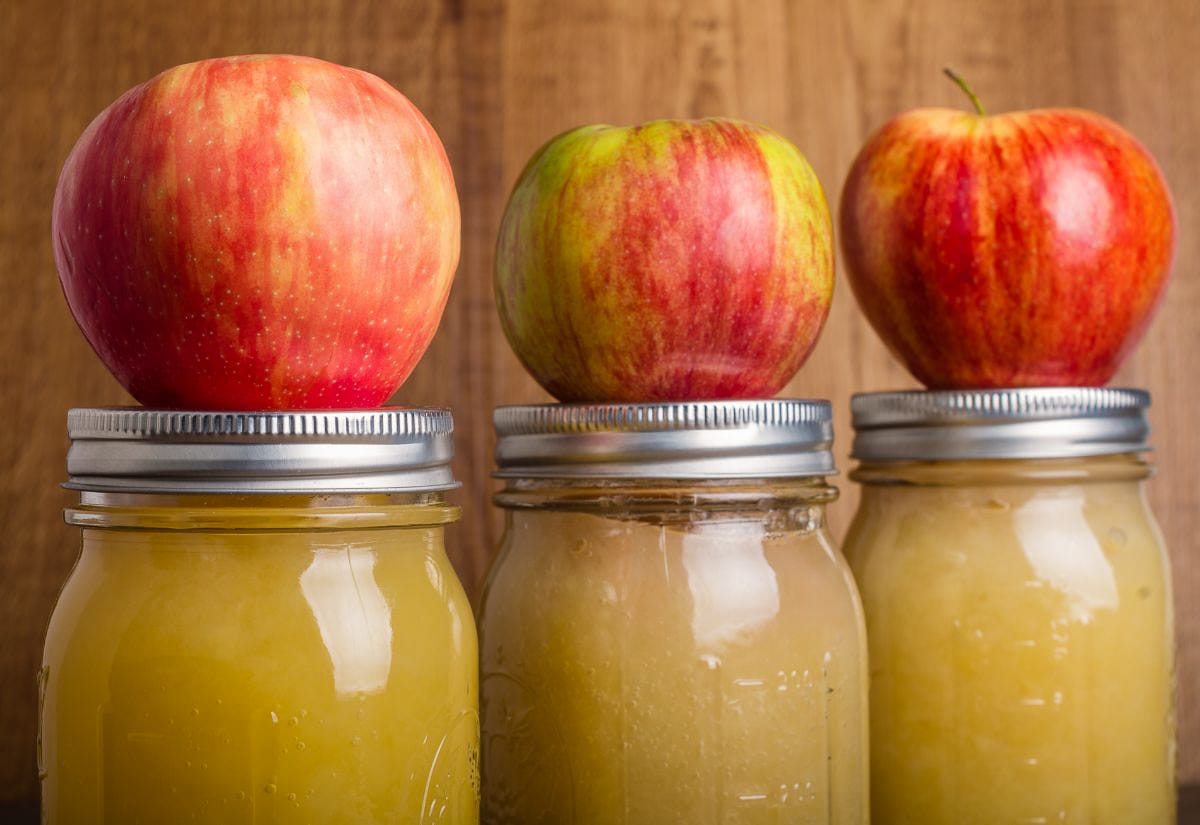
Troubleshooting Your Batch
Most batches turn out great, but here are a few quick fixes if your batch needs a little help.
- Too runny? Crack the lid for the last 30–45 minutes so extra moisture can evaporate.
- Too tart? Stir in a little sweetener or blend it smoother. Blending it smoother usually helps mellow that sharp edge.
- Too sweet? Add a splash of lemon juice or blend in a tart apple if you’ve got one.
- Turns brown? This happens when apples oxidize. Adding a splash of lemon juice helps. Honestly, it might not be the prettiest, but it still tastes great.
- Still chunky after cooking? Blend longer, or give it another 30 minutes on LOW to soften stubborn pieces.
Before You Make Your Batch…
Here are a few questions that come up pretty often.
If you like simple recipes like this one, go ahead and pin it so you can find it later.
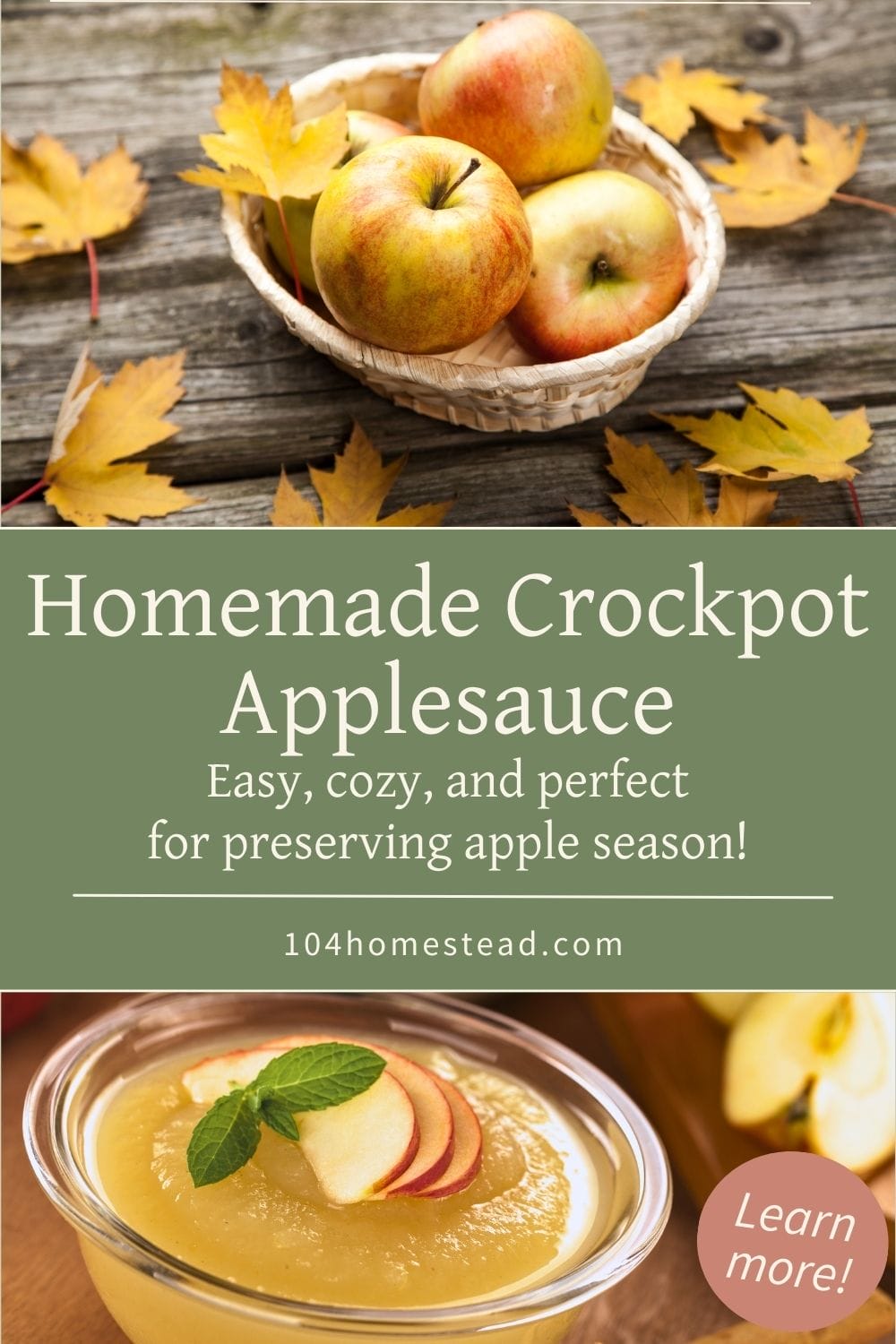
There’s something about warm applesauce that just hits right. Whether you’re stocking your pantry for winter, stirring it into oatmeal, or just eating it straight from the jar (no judgment here!), this easy recipe will quickly become one of your favorites. If you want to preserve a big batch for winter, you’ll find my full guide here: how to can applesauce using a simple water bath method.
Love working with apples? If you’re already in apple mode, learn how to make my apple butter recipe made with crab apples, whip up a quick gluten-free apple crumble, or take your apple skills even further by trying your hand at brewing hard apple cider at home.
Got a favorite apple variety or a twist you swear by? Tell me about it! I’m always looking for new combinations to try in my next batch.
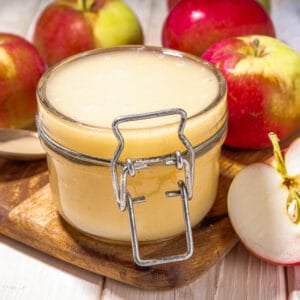
Crockpot Applesauce
This post may contain paid links. If you make a purchase using the links in this recipe, I may earn a commission.
Equipment
- Crockpot slow cooker
- Immersion Blender or potato masher
Ingredients
- 5 pounds Mixed Apples peeled or unpeeled, cored, chopped
- ½ cup Water or apple cider
- 1-2 teaspoons Cinnamon optional
- Sugar, Honey, or Maple Syrup to taste (optional)
Instructions
- Place the chopped apples in the slow cooker. Add the water or cider and sprinkle cinnamon over the top if using.5 pounds Mixed Apples, 1/2 cup Water, 1-2 teaspoons Cinnamon
- Cover and cook on LOW for 6–8 hours or HIGH for 3–4 hours, until the apples are very soft and breaking down.
- Mash with a potato masher for chunky applesauce, or blend with an immersion blender for a smooth texture.
- Add sweetener only if needed.Sugar, Honey, or Maple Syrup
Notes
- Use a mix of sweet and tart apples for the best flavor.
- If your applesauce seems watery, crack the lid during the last 30–45 minutes of cooking.
- Refrigerate for 7–10 days or freeze for up to 6 months. Can for the longest shelf life.


